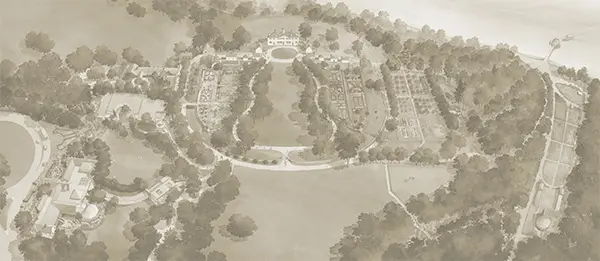Fragrant spires of dark purple flowers above silvery foliage light up the garden border in summer. If trimmed after blooming, they will flower again. Their flowers may be used in sachets or as flavoring in baking and drinks.
Latin Name
Lavandula angustifolia
Family
Lamiaceae
Also Known As
Common Lavender Garden Lavender True Lavender
Type of Plant
Bloom Season
June - August
Seasons
Specifications
Uses
Sunlight Exposure
Tolerances
Attracted Wildlife
Colors
Native Range
Mediterranean
History
Thomas Jefferson grew English lavender as one of his kitchen herbs in 1794.
Other Details
Planted at Mount Vernon



Hardiness Zones










Average annual extreme minimum temperature 1976-2005









Bartlett Tree Expert Company has been working with Mount Vernon Estate since 2011 providing expert arboricultural care and GPS mapping for the estate’s historic trees, as well as support from their research facility. Mount Vernon is proud to partner with Bartlett Tree Experts and appreciates their sponsorship of George Washington’s Mount Vernon Plant Finder App.
Bring Washington's Garden Home
Purchase our historic seeds, collected from plants grown at Mount Vernon and plant them in your own garden.
Shop Now
